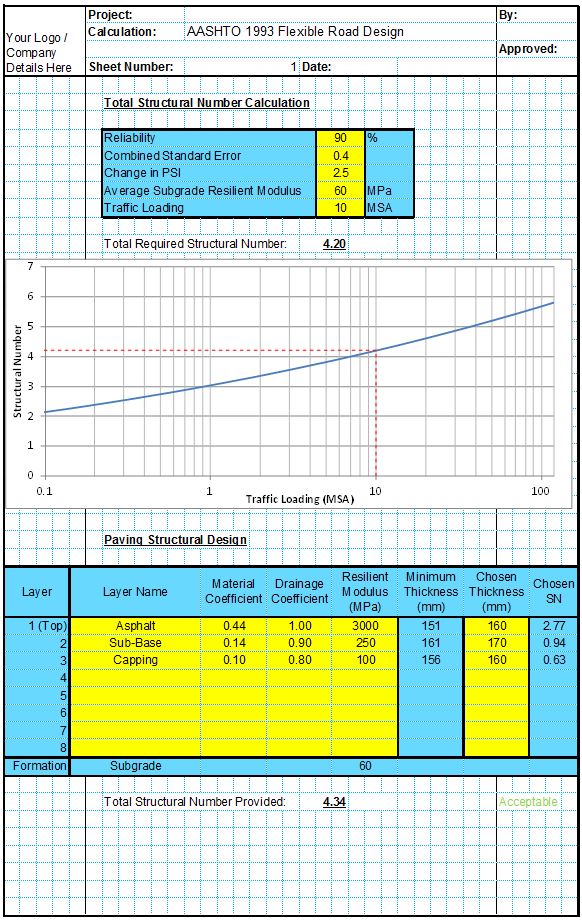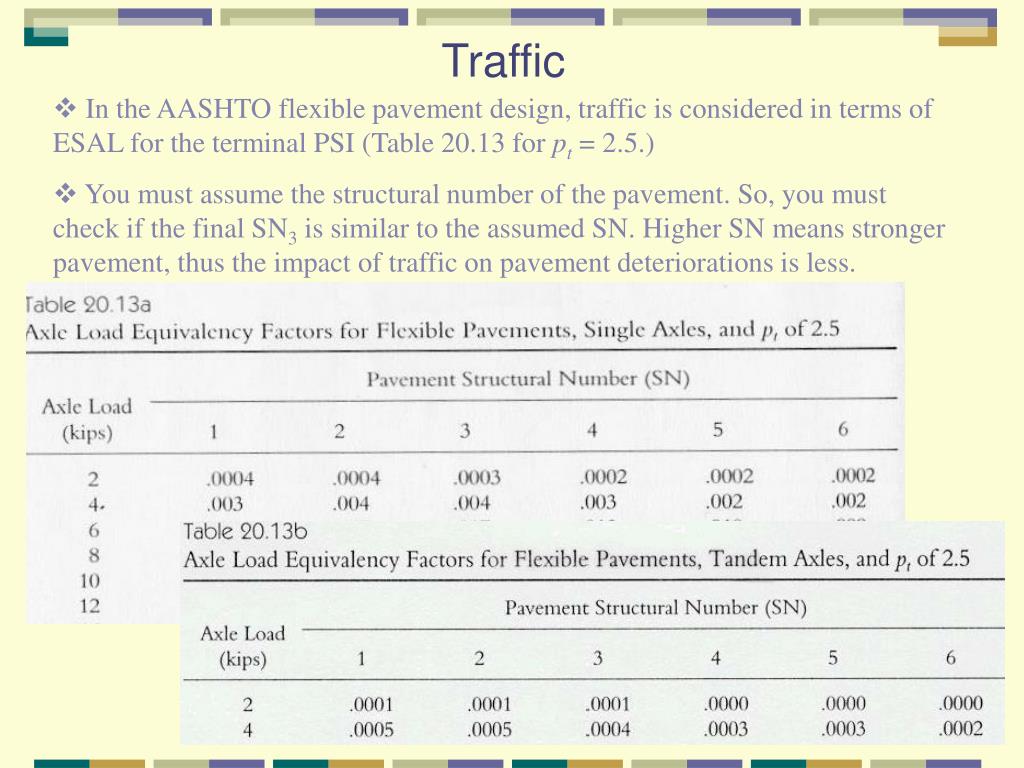


Determine the allowable serviceability loss due to traffic: ΔPSI = 1.7 (this may be reduced if frost heave or swelling soils are an issue).Determine the design reliability factors: Reliability = 90% (usually set by agency policy), Z R = -1.282, S 0 = 0.45.Evaluate the design traffic: W 18 = 11.6 million ESALs.For the example design scenario, a 30-year design life is specified. The steps in the 1993 AASHTO flexible pavement design procedure are summarized below in the context of the example baseline scenario presented in Section 6.2.1: Guidelines for length of analysis period (AASHTO, 1993). AASHTO recommendations for analysis periods for different types of roads are summarized in Table C-1. Analysis period in this context is synonymous with design life in the 1993 AASHTO Guide. However, realistic performance limitations may require planned rehabilitation within the desired analysis period, in which case, the analysis period may encompass multiple performance periods. It may be identical to the performance period. The term 'analysis period' refers to the overall duration that the design strategy must cover. It is equivalent to the time elapsed as a new, reconstructed, or rehabilitated pavement structure deteriorates from its initial serviceability to its terminal serviceability. Performance period refers to the time that a pavement design is intended to last before it needs rehabilitation.


 0 kommentar(er)
0 kommentar(er)
